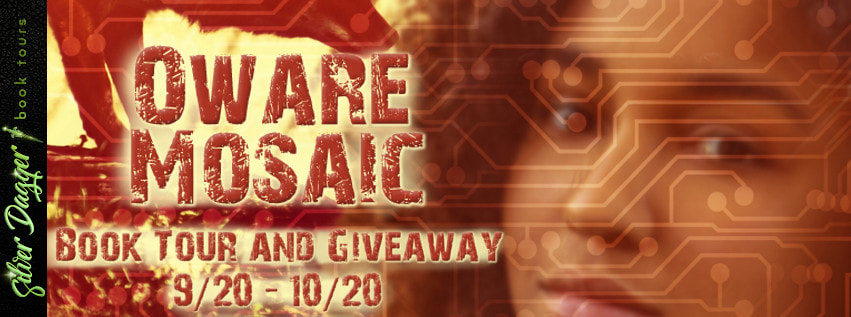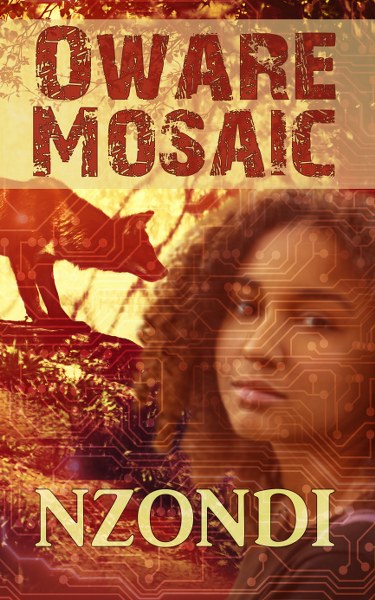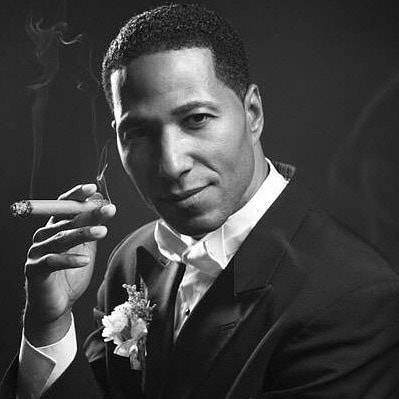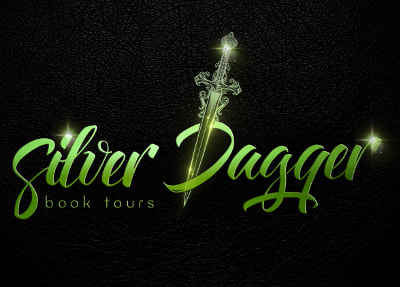13
Reasons Why Horror Should Put On A Happy Face
Horror
& Urban Fantasy Literature’s Effect on Health Awareness
by
Nzondi
In Heath Ledger's
Oscar-winning performance in his portrayal of Batman's most notorious villain,
he said, “As you know, madness is like gravity … all it takes is a little
push.”
The film, the actor
and real life, orchestrated a cacophony that sends a chill up my spine to this
very day. When I used to run the ScHoFan Critique Group in the Greater Los
Angeles Writers Society, I remember a time when I introduced a story with a
suicide narrative. It was then that I learned how using the wrong language
could trigger a negative response. I never wrote that story, becoming aware
that reinforcing certain stereotypes of people with mental illnesses was
dangerous and could cause real-life discrimination and worse, harm. There have
actually been novels, which I will not name out of sensitivity to the subject,
that led to a copycat effect that increased by more than three hundred and thirteen
percent after one of those novels was published. That is a stunning number. In
this article, I'd like to discuss if horror writers should start exploring how
to develop characters with severe mental illnesses in a fair and more accurate
representation, how writing certain stories actually increase copycat
responses, and what stories are out there in the horror genres that chose to
tread different paths of presenting mental illness.
Does the DC
film, Joker: Put On A Happy Face, portray the character as a
psychopath or a mentally ill person? The first official trailer creates empathy
for the character, and portrays him as a person that has a difficult time
dealing with an array of physical abuse. Since the supervillain first appeared
in the debut issue of the comic book, Batman (April 25, 1940),
the joker was introduced as a psychopathic prankster with a warped sense of
humor. Forensic psychiatrist, Vasilis K. Ponzios, M.D. says, “There is still a
misunderstanding to the portrayal of insanity in the Batman films and movies
and what it means to be legally insane.” He goes on to say, “For instance, the
Joker has been hospitalized at the Elizabeth Arkham Asylum for the Criminally
Insane, even though, in real life he probably wouldn't qualify … Just because a
behavior is aberrant … it does not mean the behavior is a result of mental
illness.”
The Diagnostic and
Statistical Manual of Mental Disorders does not list insanity as a disorder.
According to one article I read, hallucinations, delusions and incoherent speech,
which are traits of a severe mental disorder, are not usually the
characteristics of a master criminal. Dr. Hannibal Lecter is the main character
we all hate to love in a series of suspense novels by Thomas Harris. A
brilliant and sophisticated forensic psychiatrist in the day, and a
cannibalistic serial killer by night. To my knowledge, the portrayal of that
character was not diagnosed with a mental illness. However, iconic horror
characters in the Halloween and Friday the Thirteenth franchises
play with the idea that psychopathic serial killers are mentally ill.
Eventually, both characters are committed to mental institutions. In real life,
these characters would be in a penitentiary, and/or on death row.
So how can horror
authors take a fresh approach to presenting attitudes of mental health issues?
First, before I get into the next subject area of mental health, let me start
by explaining exactly what I mean by the copycat effect, or perhaps, a better
usage would be suicide contagion. Suicide contagion is the characteristics of
media portrayals of suicide, and characteristics of individual adolescents that
increase the rate of suicide, and that magnitude of the increase is related to
the amount, duration and prominence of coverage. A news program may not be as
negatively effective as a New York Times bestseller or a hit TV show on the
matter. Dr. Madelyn Gould, PhD, professor of epidemiology in psychiatry at
Columbia University, believes that indirect influence occurs in both real and
fictional characters portrayed in the media.
One fresh approach,
that was bold and controversial, was taken by creators of the Netflix
series, 13 Reasons Why, based on the eponymous novel by Jay Asher.
According to the CDC, suicide is now the second most common cause of death
among teens and young adults, accounting for nearly 6,000 deaths annually in
individuals between the ages of 15 and 24. I, for one, do not want to write a
novel that participates in any mental health contagion. Therefore, seeing
how 13 Reasons Why approached the issue is intriguing to me
for my own writing. For one, the executive producers, Selena Gomez and
writer/producer, Brian Yorkey, have gone above and beyond in showing their
sincere motivations behind adapting the novel for Netflix. There's a genuine
sense of empathy to the subject matter. In the video portion of the
teenlineonline website, the creator of the non-profit organization realized
that when teens have a problem, they are most likely to go to other teens than
to their parents. She set up a hot line using teen volunteers to help troubled
teenagers address their problems. 13 Reasons Why resonated
with teens because it was a story brilliantly told by young actors.
13 Reasons Why tackled issues like suicide and bullying, head
on, yet still presented it in a way that got popular culture talking about
these issues, which was the most important asset to helping real-life youths to
open up a dialogue with teachers, parents and health professionals. In writing
this blog/essay, I learned many things to do and not to do when writing about
mental health issues. I recommend that all authors researching these do's and
don'ts before writing about any characters that have mental health issues. As a
horror writer, however, you may feel like your story is not there to preach,
teach or raise awareness. However, given the fact that there have been
documented accounts of novels affecting an increase rate of contagion, wouldn't
you want your literary themes to reflect a more accurate perspective?
I remember hearing at
a literary awards show recently, that early science fiction pulp writers didn't
care about whether their science was accurate or not, but today, that is
frowned upon in the science fiction community. I remember reading a David
Gerrold interview done by JG Faherty of the Horror Writers Association that
elaborated with more insightful perspective. In the interview, David explained
how the internet is both a curse and a blessing. Like any science fiction
writer, he loved to do research, of course for accuracy of his stories. He was
discussing research regarding characters in his Chtorr series. The more he
thought about the ecology of his species, the more it grew: what was the
interrelationships of the species, of plants and animals, the apex predators. I
remember he once did a workshop at a GLAWS special speaker's event and asked,
“How are you going to write about a character taking a spaceship to start a
colony on the moon if you don't know about the speed of ships? How far and how
long it will take? How will the humans survive on the moon? How do they account
for water? Is it shipped to the moon?”
Since the popularity
of novels like Robert Louis Stevenson’s Strange
Case of Dr. Jekyll and Mr. Hyde (Longmans, Green & Co., January 1886),
there have been many literary works that play with the concepts of how the
human mind’s battle between good and evil interplay between characters with dissociative
identity disorder. As brilliant a performance that James McAvoy gave in the
psychological horror thriller directed by M. Knight Shyamalan’s Split (and Glass), I challenge you to go back and revisit whether or not the
protagonist struggling through twenty-three personalities presented a true
depiction of a man with a “split personality”.
Look, I get it. I’ve
worked as a stand-in on a show called How
To Get Away With Murder, and I have had many conversations with attorneys
who say that the show is too sensational, especially in the courtroom. I’m
like, “Thank goodness, the creator of the show doesn’t depend on you to write
their episodes, we’d be bored out of our minds!” They are the same people who
can’t suspend belief long enough to get past the fact that when Bruce Banner
changes into the Hulk, he’s always in those purple short-pants, instead of
being nude. We are writing fiction, aren’t we? We create a way for the reader
to escape reality and travel to worlds of fantasy, science fiction, dystopias
and horror. Still, when writing about characters and stories involving mental
health, shouldn't we ask questions that breathe life into the “who, what, when
and how” of the tropes we use?
So
how do we get it right?
Here are some facts to
know about mental illness by Kathleen S. Allen, an author who also has a Doctor
of Nursing Practice degree which is a clinical doctorate:
1. Having
depression doesn't mean your character can't still have fun or laugh or be
social.
2. A character
who has bipolar disorder may have manic episodes or they may not. Bipolar
Disorder has a spectrum of symptoms from moderate depression to severe.
3. No one who has
Dissociative Identity Disorder (formerly called split personality) would kill
someone when they are in one of their alter personality states unless the core
personality would also kill. Your character would not have amnesia after
killing someone. The disorder is rare and some medical professionals don't
believe it exists at all, so be careful using it.
4. Talking about
suicide does not mean your character will push the person into attempting
suicide. It was already on their minds.
5. Your
characters don't stop hearing voices after taking anti-psychotic medication,
immediately. Sometimes, they won't stop at all. It may take weeks to months for
the meds to work. If they are having a psychotic episode, it would be
difficult, if not impossible, to function in their daily lives by going to
school, work, maintaining a romantic relationship, or maintaining any
relationship. Psychotic patients are not dangerous. Are there exceptions? Yes.
But as a general rule, they aren't.
In conclusion, one of
my biggest takeaways from researching horror writing for Mental Health
Awareness Month was some of the things we shouldn't do. For example, unless
your character is politically incorrect, don't describe suicide as an
“epidemic”, “skyrocketing” or other exaggerated terms. Use words such as
“higher rates” or “rising”. Don't describe suicide as “Without warning” or
“inexplicable”. Do convey that the character exhibited warning signs. Don't
refer to suicide as “unsuccessful” or “failed attempt”, or report it as though
it was a crime. Do say, “died by suicide” “killed him/herself”, and instead of
presenting the act like a crime, write about suicide in your story as a public
health issue. Hopefully, as horror authors, we can continue to scare the
jeebies out of our readers but at the same time, create a story which
accurately exhibits archetypes of mentally ill characters, whether they are mad
scientists, psychopathic serial killers or characters with dissociative identity
disorders that assume their mother's personality.
***
Born Acemandese Nzondi Hall in Queens, New York. Hall received his BFA from C.
W. Post, Long Island University. A two-time Honorable Mention winner of The
Writers and Illustrators of the Future Awards, he is also the author of the
novels, The Oware Mosaic (Omnium Gatherum, September
2019), Confessions of Sylva Slasher, (Montag Press, April
2013) and a non-fiction book, Lord of the Flies: Fitness for
Writers (Omnium Gatherum, April 2017).
Decades after a cataclysmic nuclear war, Ghanaian scientists develop technology that store consciousness onto data orbs called retcons. Seventeen-year-old forensic specialist, Feeni Xo, is a Enhuman (a radiation-enhanced metabolic human) that, similar to a vampire, need blood for sustenance. Through a game called the House of Oware, Feeni discovers that the virtual construct is actually an augmented reality. She and her human best friend, Sammi, a young female detective, have been mysteriously given specialized neural implants that allow them to hack into government software. The two teenagers race against time in a horrific world of deformed beasts to piece together the puzzles of the digital mosaic. Will they find a way to save sentient beings from total extinction or will they run out of time?
“Once
again, Nzondi creates a rich and vibrant world crackling with life.
He is a brilliant writer, one readers and critics should be
watching.”
—Pete
Nowalk, creator of How To Get Away With Murder
"If
you're looking for a story that's daringly imaginative, Oware Mosiac
will scratch that itch."
—Alma
Katsu, author of The Hunger
"Nzondi's
Oware Mosaic is real Afrofuturism, speculative fiction actually set
on the continent itself. This is the future of SF, and the
future is looking good.”
—Steven
Barnes, author of Lion’s Blood
Nzondi
(Ace Antonio Hall),born July 4th, 1966 is an American urban fantasy
and horror writer. He is best known as the creator of Sylva
Slasher, a teenage zombie slasher who also raises the dead for police
investigations, which includes novels and short story collections.
His non-fiction book, Lord of the Flies: Fitness for Writers was
published by Omnium Gatherum. One of 2017's best Bruno Mars'
video/song parodies of 24K Magic, called 24 Cali Fitness, was
released to promote the book.
Among
his many short stories that were published in anthologies and print
magazines, Hall's short story, Raising Mary: Frankenstein, was
nominated for 2016 horror story of the year for the 19th Annual
Editors and Preditors Readers Poll. Additionally, three of his short
stories were on the Horror Writers Association Reading list for
the 2017 StokerCon Awards. A former Director of Education for NYC
schools and the Sylvan Learning Center, the award-winning educator
earned a BFA from Long Island University. Hall currently lives in Los
Angeles with his bonsai named Bonnie.
Follow
the tour HERE
for exclusive content and a giveaway!









No comments:
Post a Comment